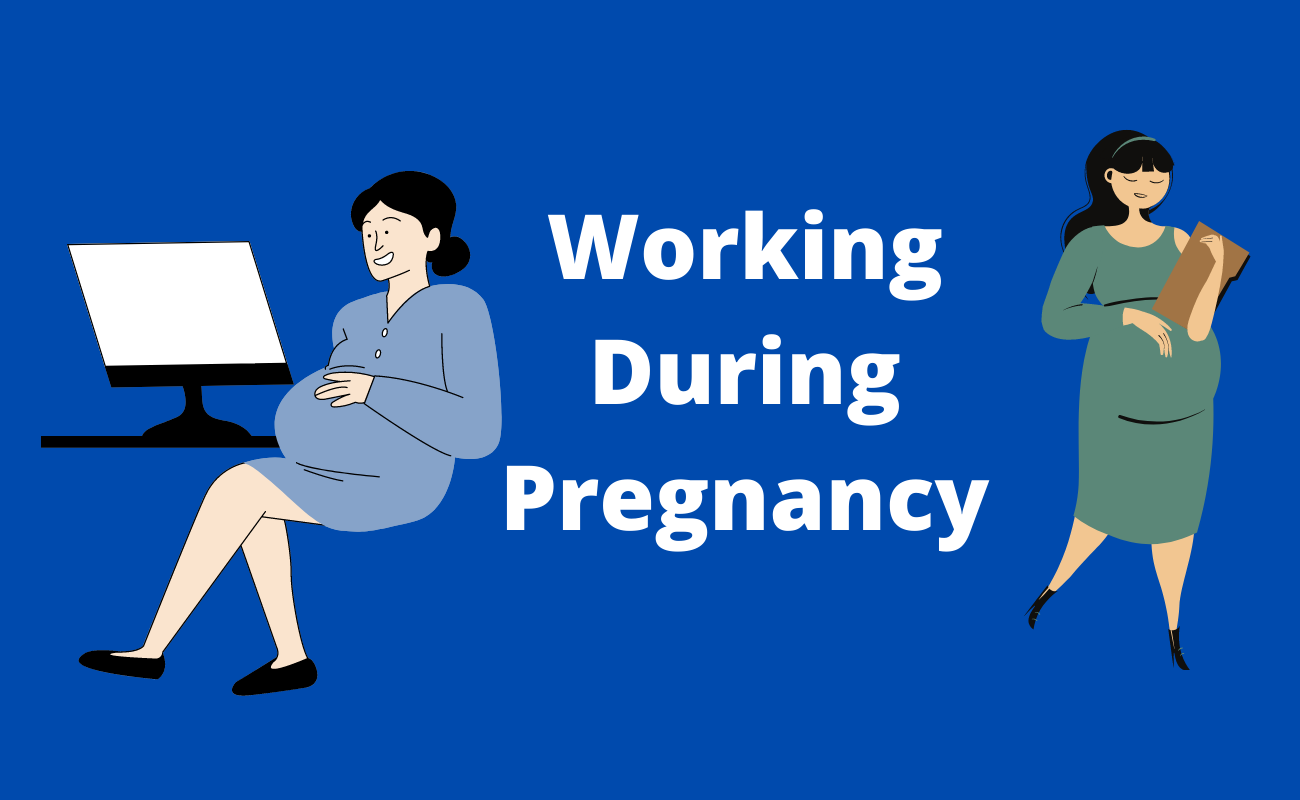Pregnancy and the joy of bringing a new life into the world is an incredible experience for expectant mothers. However, it isn’t exactly a bed of roses, for there are a lot of challenges, medical and otherwise, along the way. Apart from taking care of their health, expectant mothers often worry about their unborn child as well and experience a roller-coaster of emotions. This vulnerable state of mind might affect other areas of their life such as work. This is why it’s crucial to know some tips and tricks to manage work while pregnant.
Table of Contents
Your Workplace Rights During A Pregnancy
However, before heading to these tips, there are some important workplace rights you should be privy to, for no employee, pregnant or otherwise, should be subjected to unsafe work environments. In fact, Occupational Safety and Health Administration (OSHA) is a government agency that is strictly dedicated to ensuring this. However, it is still prudent to ask yourself these 3 important questions regarding your workplace safety:
Do you operate heavy machinery?
When it comes to a job that entails operating heavy equipment and machinery, pregnant women can feel intimidated since there is a common notion that the vibrations from the machines might affect the health of the baby. However, that isn’t exactly necessary. Generally, any activities you did before getting pregnant can still be done, albeit at a gentler pace if possible. Hence, it might still be possible to operate some machines, but it’s best to consult your obstetrician and your employer before making a decision.
Are you exposed to harmful chemicals?
In case your work requires you to work with hazardous chemicals, then the rules would be quite clear to you because as per OSHA guidelines, employers must inform you about the potential health risks of handling these substances, irrespective of your pregnancy. Hence, if you find that your employer is cutting corners in terms of safety equipment, then you can file an official complaint.
Do you spend too much time in front of the computer?
While manual labour has more restrictions, sedentary jobs that require working in front of the computer are considered safe in general. However, try to avoid too much screen time as it is important for mothers-to-be to move around from time to time to maintain their mobility.
Now, if you have satisfactorily answered these questions and are sure that your company isn’t cutting corners in terms of safety, then it’s time to learn about 7 great ways in which you can manage work while you’re pregnant.
7 ways to balance between job and pregnancy
1. Sharing Pregnancy News With Your Company/Workplace
First and foremost, your employers need to know about your pregnancy, so that a few adjustments can be made to accommodate your new schedule. Ideally, arrange a private meeting with your manager or supervisor and let them know the news and your expected due date in a positive yet professional manner.
Another smart course of action is to gather data regarding the maternity-leave policy of your particular company/organization so that you are aware of your rights. However, don’t discuss the plans for your leave just yet, for they can be arranged at a later date.
Once the manager has been informed, you are now free to share the joyous news with the rest of your colleagues and well-wishers within the organization. Thus, keeping your higher-ups in the loop is the first necessary course of action during pregnancy.
2. Avoid Clashes Between Doctor’s Appointments And Work Appointments
While regular meetings and check-ups with the obstetrician are important and unavoidable, so is your work. Hence, it’s vital to learn to balance the two aspects of your life. Health check-ups and prenatal gender blood tests should not interfere with your work schedule if possible. To do this effectively, try to have an OB-GYN that is near your workplace so that you can schedule an appointment before work or during a lunch break.
Another useful tip is to try and get the first appointment for the day because doctors are less likely to arrive late at the start of the workday. Thereby, you can avoid unnecessary waiting times. However, if it is inevitable, try to get some light work done before appointments, such as phone calls or emails.
Lastly, avoid a check-up during important days at work, when you have to attend or give a presentation for example. While some scheduling conflicts are fine and expected, they should not become the norm.
3. Explore Remote Working
After the pandemic, the concept of remote work has caught on, with most companies still continuing the practice. Fortunately, this style of working suits the modern pregnant woman as well. Rather than worrying about commuting to and from work and dealing with various pregnancy symptoms at the office, remote work offers the freedom to work from home or some other place where you can be most comfortable.
This idea is particularly appealing during the later trimesters when expectant mothers might feel more uncomfortable and irritable. You no longer have to keep up appearances in front of your co-workers and can instead simply focus on the task at hand.
Moreover, to make sure that the remote work setup is efficient, try it experimentally during the early stages of your pregnancy and iron out any kinks. Lastly, to make this transition even smoother, consider finishing all meetings and communications during a fixed part of the day.
4. Take Advantage of Peak Energy
It’s not uncommon to find yourself active and alert during odd times of the day when you are supposed to be resting. However, it’s best to capitalize on this peak energy and get as much work done as possible at this time so that you can relax and rejuvenate when your body demands. This flexible style of working is best suited for a remote setup, and most teams are understanding enough to accommodate this style of working, as long as the tasks are finished on time.
To further give you an energy boost during these hours, try to make yourself as comfortable as possible with the aid of chairs, pillows, or footstools so that you can focus for longer chunks of time. If possible, take regular breaks from your work and go for short walks, do some light stretching, do yoga, or perhaps even take a nap to maintain your mental focus.
5. Take Control of Wandering Thoughts
During later stages of the pregnancy, it is not uncommon to have wandering thoughts, making it harder to focus and remember things. Colloquially known as the “pregnancy brain”, it can be a frustrating symptom for professional women who rely heavily on their mental focus to get tasks done. While it might be unavoidable to an extent, this brain fog can certainly be minimized.
To mitigate this, make a detailed document regarding your important decisions and schedules. If you have a partner or family member that is actively helping you out at this time, share it with them too.
Furthermore, several mobile apps now help women to prioritize and schedule their daily tasks so that they can deal with the pregnancy one day at a time. Another major culprit behind the pregnancy brain is constant fatigue, so make sure to constantly nourish yourself with nutritious snacks and don’t forget to keep yourself hydrated.
6. Assign/Delegate Tasks Before Maternity Leave
During the last weeks/months leading up to your due date, it’s important to plan your tasks well in advance and to also notify the employer when you are planning to take your maternity leave. While competent teams will begin delegating your tasks on their own, it’s best if you do it yourself, when you are still working, for it shows quality leadership and foresight. Plus, since you would know the most about the tasks assigned to you, it would be easier for you to train someone else, so that the work can continue without a hitch.
Apart from delegating your tasks, be clear with the timeline of your maternity leave. Take as much time off work as possible for it might be important for your recovery once the baby is born. If you can join sooner, then you can always notify your boss and rejoin the workforce early.
7. Plan For Your Return To Work
Lastly, after childbirth and sufficient recovery, you can plan out joining the workforce. Since maternity leaves are often lengthy, many projects and tasks you once oversaw might now be progressing ahead without your supervision. Hence, this transition period can be tricky, when you are trying to regain footing back at work, while also managing the newborn.
Fortunately, most companies allow for flexible work hours and methods to help ease new mothers back into the professional world. The remote work setup that you were familiar with before birth might work perfectly in this regard.
Alternatively, if it is necessary to be physically present at the office, then there are provisions to bring the infant to work. Many organizations around the world are now open to the idea of new mothers bringing their babies to work, for it helps them stay focused as they are not worried about their child.
However, if none of these options works, you can always look for more freelancing/remote work opportunities that will allow you to take better care of your newborn without compromising on work.
Conclusion
Managing pregnancy while working might seem daunting at first, but the process becomes much simpler with the help of these aforementioned tips. In the modern world, women truly can have simultaneous success in both professional and familial domains, provided they are smart enough to manage their time efficiently.

Alex is fascinated with “understanding” people. It’s actually what drives everything he does. He believes in a thoughtful exploration of how you shape your thoughts, experience of the world.



